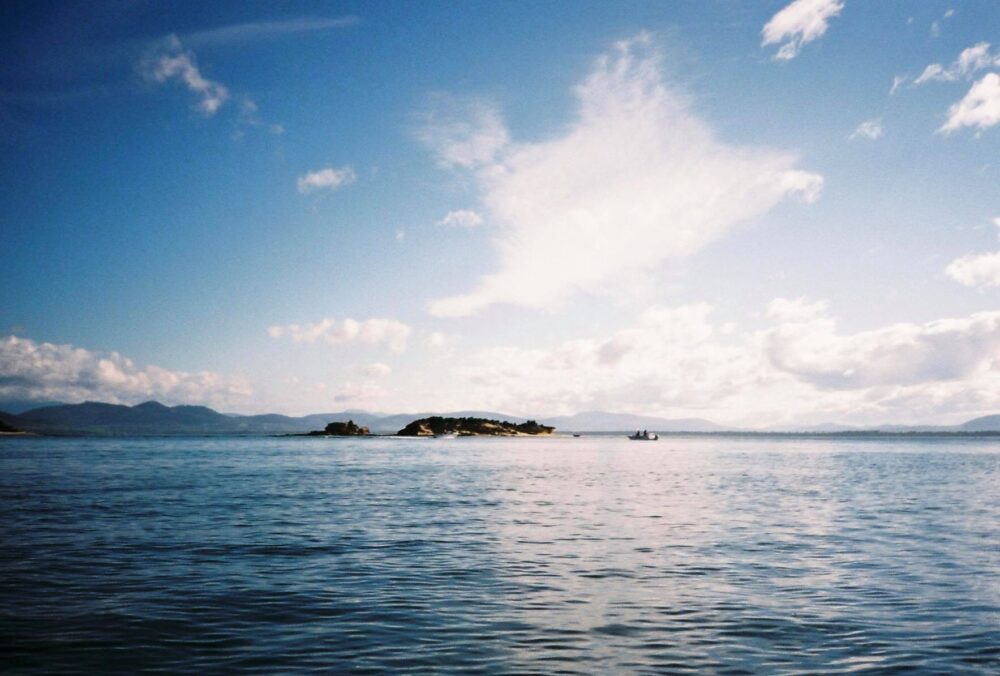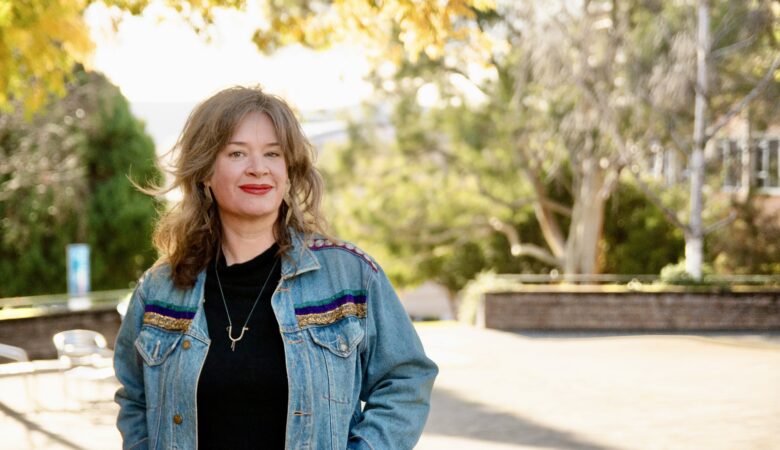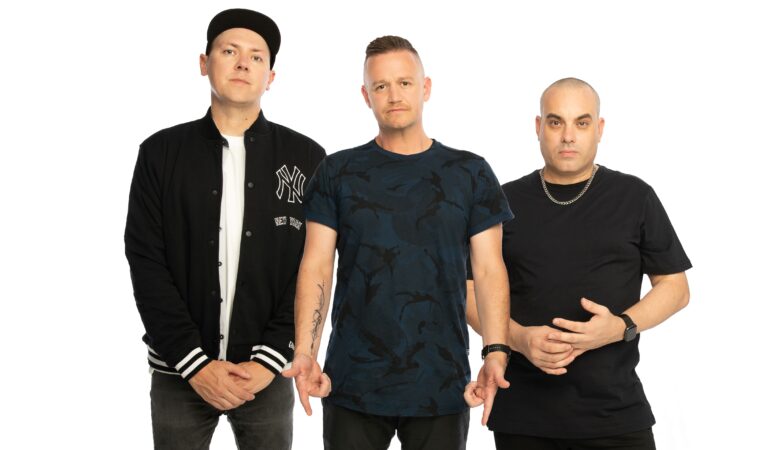On most days of the year, if you walk around the headlands of Dodges Ferry, you won’t have much company. You might pass the odd local walking their dog, a couple of men fishing off the rocks or one of the householders mowing the lawn of their clifftop property — and give them the complimentary curt hello as you pass by. But for the most part, you’ll be accompanied only by the sounds of waves crashing on the rocks, far-off boat engines humming and shorebirds calling as they fly above the brush.
That’s why it can be a bit of a shock when, on the odd day, you emerge from one of the overgrown tracks to see a group of people, standing in a clearing on the clifftop and staring out into Fredrick Henry Bay. Most have a camera or binoculars in one hand and use the other to alert their companions’ attention between the waves. Whilst shorebirds, hapless boatmen and yachts that have pulled their moorings might attract one or two onlookers, there’s only one thing that can attract such a group — whales.
Between September and November, whale watchers line cliff tops along lutruwita/Tasmania’s east coast from Recherche Bay to Musselroe Bay, seeking to spot the Humpback Whale (Megaptera novaeangliae). During September and October, Southern right whales (Eubalaena australis) can also be seen as they travel southward to their feeding grounds in the Sub-Antarctic. When they get to these feeding grounds, both Humpbacks and Southern rights will eat plankton, krill and small fish, which they strain from the water using the plates hanging from their jaw (a feature unique to baleen whales). Amazingly, during migration and breeding whales do not eat, subsisting only on their stored blubber.
Between May and July, Humpback Whales can be seen migrating back northward to New South Wales, Queensland and northern Western Australia, where they breed. Preferring cooler waters, Southern right whales migrate between June and September to breed in Tasmanian, South Australian, Victorian and southern West Australian waters. After giving birth, the mother whales stay close to their calves, allowing them to suckle.
Labelled giants of the sea, these mammals grow between 14 and 18 metres. Humpbacks weigh up to 50 tons, and Southern right whales up to a whopping 80 tons. For context, that’s about half as heavy as the average house. But despite their giant nature, seeing a whale isn’t all that easy. Take the Humpback whale, for example. Whilst the Humpback calves have to come up for air every 3-5 minutes, adult Humpbacks only come to the surface every 7-15 minutes. Even if you manage to spot a whale once, with a cruising speed of 8 km/h, a whale may have already travelled a fair distance by the next time it surfaces, making it hard to see again.
Despite this, many give it a fair crack, making a sport of whale watching. To spot a whale, onlookers watch for breaks in the water’s surface. Humpback whales can be identified from their distinctive white underside, long pectoral fins and tendency to lift their back high when surfacing and flukes when diving. If the whale is all-white, then watchers have spotted the famous albino Humpback whale, Migaloo. Conversely, whale watchers know it’s a Southern right if they can identify white calluses on the whale’s head and a broad back with no dorsal fin.
Breaching, when whales jump out of the water and twist, is perhaps the most spectacular practise that can be seen by watchers. Whilst Southern right whales can lift around three quarters of their body out of the water, some Humpback whales can jump completely clear. Breaching is used by whales to communicate, deter predators, play and dislodge parasites. Another easy behaviour to spot is blowing, where whales push air out of their heads. Humpbacks have a small and bushy blow pattern of up to four metres, while Southern right whales have a v-shaped bushy blow up to five metres. A number of other oddly-named practises can be seen from above the water, such as lobtailing, pec slaps, body rolls, tail lifts and spyhopping.
In the south of lutruwita/Tasmania, popular spots for whale watching include mutatayna/South Arm, the tukana/Tasman Peninsula and the d’Entrecasteaux Channel. Whales have even been seen recently returning to the timtumili minanya/Derwent River. Whilst the glimpse of a whale in the timtumili minanya/Derwent River is now a rare and treasured sight, little more than two hundred years ago whales were so abundant that they could be regularly seen, smelt and heard from nipaluna/Hobart. At the time, there are estimated to have been between 38,000 and 55,0000 Humpback whales, and between 55,000 and 70,000 Southern right whales in Australian waters. During this time, and for years before, beached whales have been used as food, weapons, shelter and utensils by First Nations. In some First Nations, whales are totems, feature in Dreamtime stories and are recorded in rock art.
After invasion, whaling was one of key industries of nipaluna/Hobart settlers. At its height in the 1830s, there were thirty-two whaling stations along the east coast, with nine in nipaluna/Hobart alone. When whales were sighted, a small group of wooden whaleboats would be launched and rowed in pursuit of whales, who would be killed by harpooning before being towed back to shore. Whale products, such as meat, blubber and bone, would then be stored in buildings such as the Georgian sandstone buildings of Salamanca Place, before being exported. Their oil would be used for lamps, candles, perfumes and soaps, and their bones for corsets, umbrellas and whips. At its peak, whale oil and meat were lutruwita/Tasmania’s biggest export.
First Nations people, including William Lanne, Henry Whalley and Walter George Arthur, worked alongside the colonial whalers during the peak of the whaling industry in the 1800s. But the whaling trade had disastrous impacts on First Nations people. Whaling stations were built on stolen land, displacing First Nations people. Some First Nations people worked at whaling stations, though it is not clear if they received payment for this work. There are also accounts of First Nations women being abused at whaling stations by whalers.
In the 1840s, the population of whales close to shore had been so depleted that the industry switched to deep sea hunting. Whale populations had been so overfished, together with an economic depression and lack of local investment, that the last Tasmanian whaling voyage was completed in 1900. Even so, whales continued to be killed in Australian waters to the point of extinction, with the numbers of Southern right whales descending to less than 300 in 1920, and Humpback whales to 1,500 in 1960.
With the populations at dire levels, Southern right whales were protected in 1935, and Humpback whales in 1965. In 1978, whaling finally ceased in Australian waters. The oceans around Australia are now a whale sanctuary, with it being an offence carrying serious penalties to kill, injure or interfere with a whale. In 1986, a moratorium on the commercial killing of whales was put in place by the International Whaling Commission.
Since being protected, whale populations have grown, with more and more returning to lutruwita/Tasmania’s coasts during their migration periods. Despite this, there are still only 3,500 Southern right whales in Australian waters, leaving them endangered. The number of Humpback whales in Australian waters has increased to 40,000, with the species now being considered vulnerable rather than endangered. At the objection of experts, the Australian Government is considering taking the Humpback whale off the threatened species list entirely.
Whilst still recovering from the brink of extinction to which hunting pushed these whales, man-made threats continue to place pressure on whale populations. Habitat degradation from coastal industrialisation, entanglement in fishing gear, ocean noise, vessel strikes, pollution, marine debris and changes in water temperature and environment due to climate change all threaten the population of whales. Experts warn that without action on climate change, we could see whale numbers plummet rapidly in the coming years as the effects of this climatic change become more evident.
With a history of exploitation and an uncertain future, we need to continue to advocate for the protection of whales. Taking a walk out to the coastline to spot one of these majestic creatures in the wild may just be a good place to start.
To see what whale watchers have been spotting, join the Whale Spotting Tasmania Facebook group.








